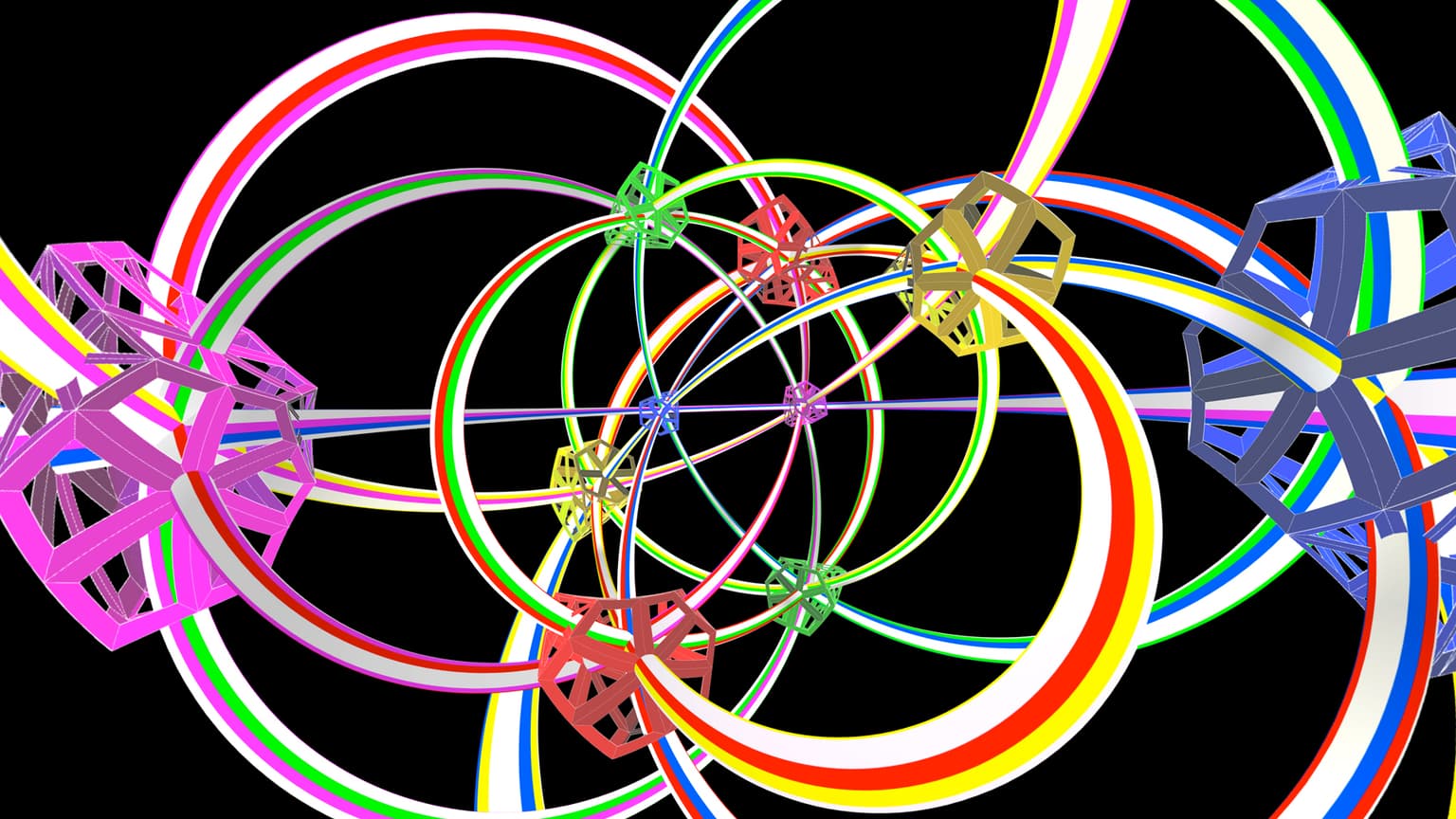2014 Joint Mathematics Meetings
Charles Gunn and Thomas Banchoff
Artists
Charles Gunn and Thomas Banchoff
Researcher and Teacher
Matheon, Technisches Universität Berlin
Berlin, Germany
Statement
We are both excited by the use of computer graphics to help reveal mathematical structures, and have been since the days of punch cards. A semester together at TU Berlin in 2012 led to our first collaboration, and the work shown here. Banchoff was studying a particular higher-dimensional manifold (see description below); Gunn observed that his new, panoramic rendering techniques provided an ideal tool for studying a 3-dimensional slice of this space, the so-called 10-cell in the 3-sphere (see description below). Our artistic aim is, by astute choice of view, form, and color, to allow this space, particularly its rich set of symmetries, to reveal itself. We are also working on a movie devoted to this theme.
Artworks

View of the 10-cell in the 3-sphere, with peripheral symmetry axes
18" x 31"
Color print of computer-generated image
2013

View of the 10-cell in the 3-sphere, with central symmetry axes
18" x 31"
Color print of computer-generated image
2013